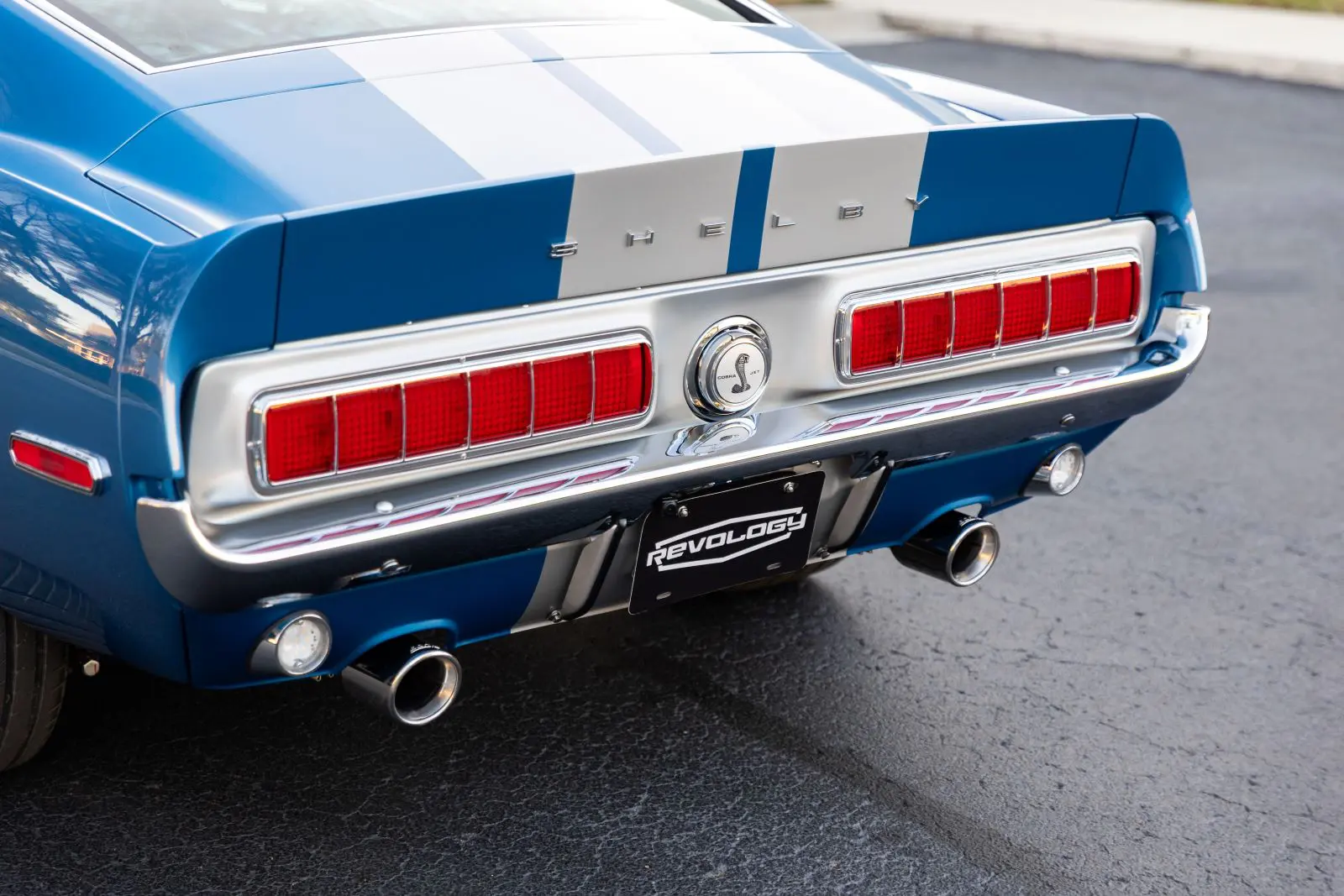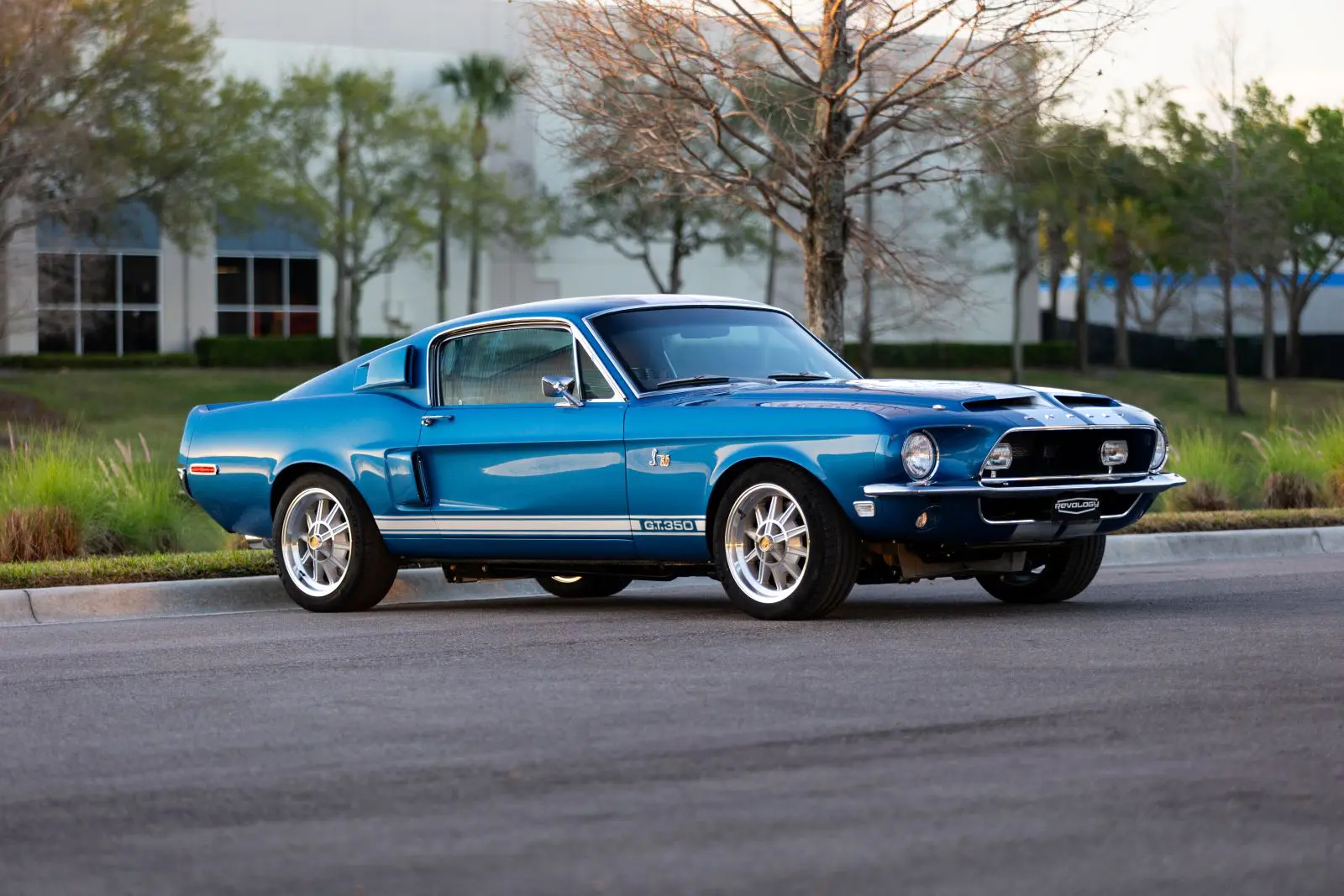The Ford Mustang revolutionized American automotive culture upon its 1964 debut, blending sporty performance with everyday accessibility. Among its variants, the Shelby editions elevated the platform to legendary status, particularly during the late 1960s. Carroll Shelby’s collaboration with Ford transformed the Mustang into a racing-bred icon, emphasizing raw power and aggressive styling. In this context, the 1968 Shelby GT350 stands out as a pinnacle of that era’s engineering ingenuity. This model not only refined prior iterations but also introduced elements that distinguished it profoundly from base Mustang counterparts.
Historical Context of the Shelby GT350
The Shelby GT350 emerged in 1965 as Carroll Shelby’s vision to homologate a Mustang for SCCA-B production racing, requiring at least 500 units for eligibility. By 1968, Ford’s deepening involvement shifted production from Shelby’s California facility to Michigan, integrating the cars into mainstream assembly lines.

This transition marked a subtle evolution, yet preserved the model’s racing heritage. Consequently, the 1968 Shelby GT350 became the final iteration under direct Shelby oversight, bridging raw competition roots with broader market appeal. Its development reflected the era’s escalating muscle car rivalry, where performance demanded innovation without compromise.
Evolution from Earlier Models
Early GT350s, like the 1965 version, relied on a high-revving 289-cubic-inch V8 tuned for track dominance. However, as Mustang platforms grew in size and luxury for 1967-1968, Shelby adapted accordingly. The 1968 model ditched the 289 for a more robust 302-cubic-inch engine, aligning with Ford’s updated lineup.
This change, while maintaining competitive edge, allowed better integration with production processes. Moreover, the introduction of convertible variants in 1968 expanded accessibility, appealing to enthusiasts seeking open-air thrills. Thus, the model evolved from a pure racer to a versatile performer, setting it apart from the more utilitarian standard Mustangs.
Ford’s Role in 1968 Production
Ford’s increased control in 1968 streamlined marketing and distribution through dealership networks, boosting visibility. Unlike independent Shelby builds, these cars benefited from factory efficiencies, ensuring consistent quality. Yet, Shelby’s signature modifications—such as unique badging and reinforced chassis retained exclusivity.
This partnership not only amplified the GT350’s reach but also foreshadowed Ford’s independent high-performance models like the Boss series. As a result, the 1968 Shelby GT350 embodied a harmonious blend of corporate scale and boutique craftsmanship, differentiating it from volume-produced Mustangs.
Design and Styling Innovations
The 1968 Shelby GT350’s aesthetics screamed performance, with a fiberglass hood featuring functional dual scoops for enhanced airflow. These elements, absent in standard Mustangs, reduced weight while improving engine cooling during spirited drives. Side scoops and a rear deck spoiler further optimized aerodynamics, channeling air to brakes and cabin ventilation.
In contrast, base models offered milder trim lines, prioritizing comfort over track-ready flair. Therefore, the GT350’s design not only turned heads but also engineered superior handling, making it a visual and functional standout.
Exterior Features That Defined the Era
Prominent grille-mounted driving lights flanked the central high beams, creating an aggressive front profile unique to Shelbys. Rear quarter scoops expelled hot air, a necessity for the V8’s heat output, while wide fender flares accommodated performance tires. Color options like Wimbledon White or Candy Apple Red, accented by racing stripes, amplified its motorsport lineage.
Standard Mustangs, by comparison, featured simpler bumpers and no such vents, underscoring the GT350’s purpose-built ethos. These details ensured the model remained instantly recognizable, even among the Mustang family’s diverse lineup.
Interior Refinements for Driver Focus
Inside, the GT350 prioritized pilot immersion with a wood-rimmed steering wheel, additional gauges for oil pressure and amperage, and a roll bar for structural rigidity. Power steering and brakes became standard, easing control without diluting excitement—features optional or absent in base trims. The deluxe interior, available in black or saddle, included inertia-reel harnesses for safety. Consequently, while standard Mustangs leaned toward family-friendly cabins, the GT350 fostered a cockpit-like environment, enhancing driver connection to the machine.
Performance and Engineering Excellence
Under the hood, the 1968 Shelby GT350’s 302 V8 delivered 250 horsepower and 310 lb-ft of torque, paired with a four-speed manual for precise shifts. This setup outpaced the standard Mustang’s base engines, which topped at lower outputs without Shelby’s tuning. Upgrades like a Holley four-barrel carburetor and aluminum intake manifold sharpened throttle response. Moreover, a Detroit Locker differential improved traction, vital for cornering prowess. Thus, the GT350 transformed the Mustang from commuter to contender, excelling in acceleration and roadholding.
Powertrain Specifics
The 302’s cross-section design allowed smoother revs up to 6,000 rpm, contrasting the pushrod simplicity of earlier small-blocks. An optional Paxton supercharger could elevate output to 335 horsepower, though most buyers opted for the naturally aspirated variant. Transmission choices included a heavy-duty automatic for versatility, yet the manual remained the enthusiast’s pick.
In comparison, standard Mustangs lacked these refinements, often pairing milder engines with basic three-speeds. This engineering focus cemented the GT350’s reputation as a benchmark for pony car performance.
Handling and Suspension Upgrades
Kal-Kan front disc brakes provided fade-resistant stopping, augmented by staggered wheel sizes—15-inch alloys front and rear for balanced grip. The independent rear suspension, tuned stiffer than stock, minimized body roll during aggressive maneuvers. Rear traction bars reduced wheel hop, a common Mustang ailment under hard launches.
As such, the GT350 cornered with European sports car precision, far surpassing the softer ride of everyday models. These enhancements made it a Trans-Am racer in street guise, rewarding skilled drivers with confidence-inspiring dynamics.
Modern Reproductions: Revology Shelby GT350
While original 1968 Shelby GT350s captivate collectors, contemporary builders like Revology cars offer faithful recreations infused with today’s technology. The Revology Shelby GT350 utilizes a new steel unibody for structural integrity, mirroring the original’s monocoque foundation yet built with CAD precision and automated welds. This approach ensures dimensional accuracy unattainable in aged examples.
Furthermore, Revology cars integrate advanced components seamlessly, preserving vintage allure without historical drawbacks. For enthusiasts, these modern reproduction Mustang variants bridge eras, delivering the GT350 experience with enhanced reliability.
Ford Gen 4 5.0L Ti-VCT Integration
At the heart of the Revology Shelby GT350 lies the Ford Gen 4 5.0L Ti-VCT V8, a DOHC powerhouse generating 460 horsepower through twin independent variable camshaft timing. This Coyote-derived engine revs freely to 7,500 rpm, eclipsing the original 302’s capabilities while maintaining throttle harmony.
Paired with a six-speed Tremec manual or automatic, it propels the car with modern efficiency. Unlike the carbureted setups of yore, electronic fuel injection optimizes delivery across rev ranges. Thus, the Revology Shelby GT350 evolves the legend, offering torque and refinement that honor Shelby’s vision in a Ford Gen 4 5.0L Ti-VCT package.

Conclusion
The 1968 Shelby GT350 distinguishes itself through a masterful fusion of racing pedigree, bold design, and superior engineering, far exceeding standard Mustang offerings. From its transformative history to performance innovations, it embodies an era of unbridled American ingenuity. Modern interpretations, such as the Revology Shelby GT350, extend this legacy by incorporating advancements like the Ford Gen 4 5.0L Ti-VCT for enduring appeal. Ultimately, whether pursuing an original or a new steel unibody recreation, the GT350 remains a testament to automotive excellence, inspiring drivers with its timeless blend of power and poise.
FAQs
What engine powered the original 1968 Shelby GT350? The original 1968 Shelby GT350 featured a 302-cubic-inch V8 engine, producing 250 horsepower and 310 lb-ft of torque. This small-block was derived from Ford’s high-performance lineup, equipped with a Holley four-barrel carburetor and aluminum intake manifold for optimized breathing.
How does the Revology Shelby GT350 differ from the 1968 original?
The Revology Shelby GT350 serves as a modern reproduction Mustang, retaining the 1968 silhouette but upgrading to a new steel unibody for enhanced durability and precision fitment.
Why was the 1968 Shelby GT350 significant in Mustang history?
The 1968 Shelby GT350 represented a pivotal moment as the last model directly influenced by Carroll Shelby before Ford’s full takeover, introducing convertibles and refined interiors amid intensifying competition.
Can modern reproductions match the driving feel of a 1968 Shelby GT350?
Modern reproductions like the Revology Shelby GT350 closely replicate the original’s visceral driving dynamics through faithful chassis tuning and lightweight construction. The Ford Gen 4 5.0L Ti-VCT engine evokes the high-revving character of the 302 V8, augmented by a close-ratio gearbox for engaging shifts.







